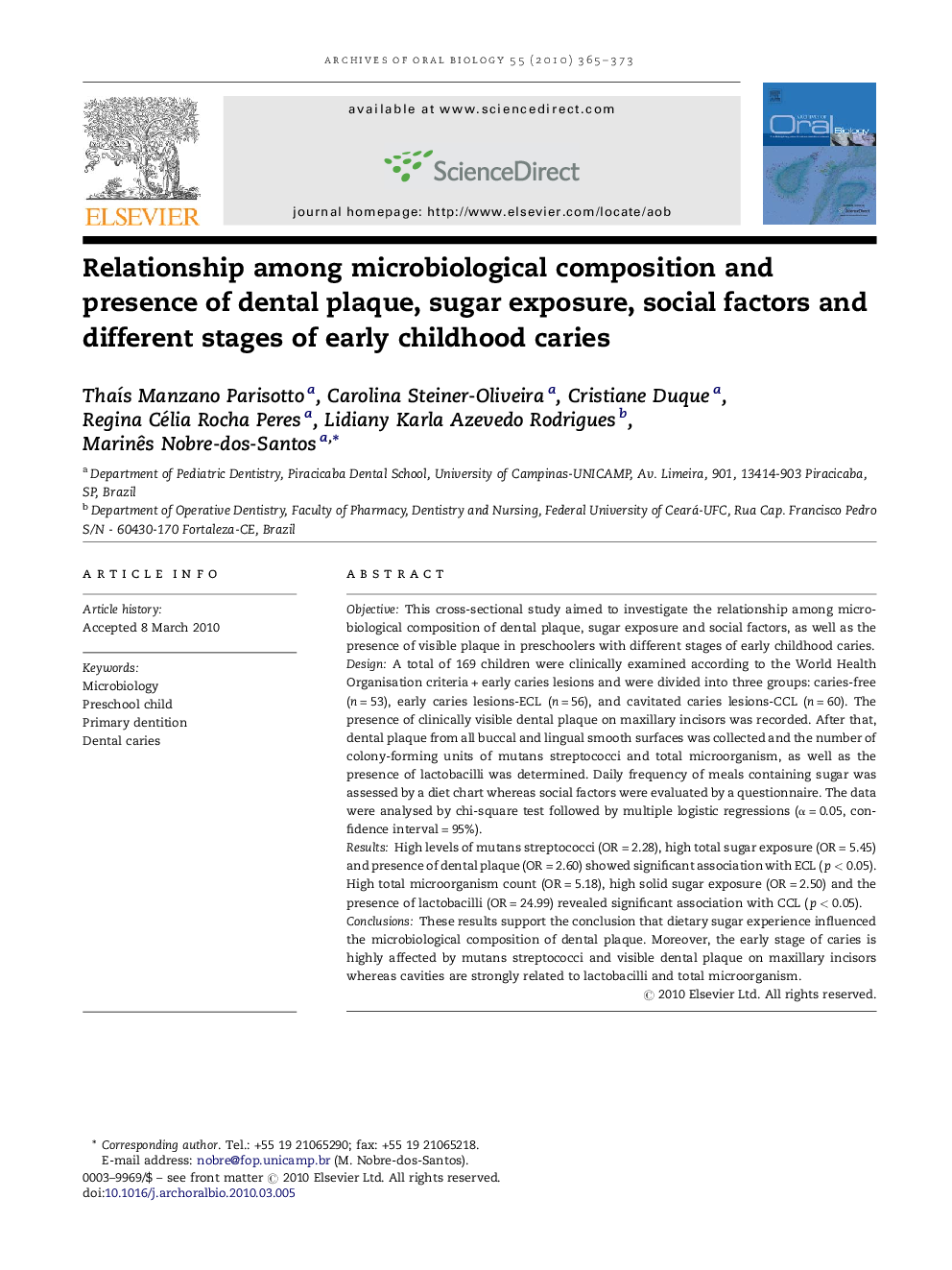| Article ID | Journal | Published Year | Pages | File Type |
|---|---|---|---|---|
| 3121383 | Archives of Oral Biology | 2010 | 9 Pages |
ObjectiveThis cross-sectional study aimed to investigate the relationship among microbiological composition of dental plaque, sugar exposure and social factors, as well as the presence of visible plaque in preschoolers with different stages of early childhood caries.DesignA total of 169 children were clinically examined according to the World Health Organisation criteria + early caries lesions and were divided into three groups: caries-free (n = 53), early caries lesions-ECL (n = 56), and cavitated caries lesions-CCL (n = 60). The presence of clinically visible dental plaque on maxillary incisors was recorded. After that, dental plaque from all buccal and lingual smooth surfaces was collected and the number of colony-forming units of mutans streptococci and total microorganism, as well as the presence of lactobacilli was determined. Daily frequency of meals containing sugar was assessed by a diet chart whereas social factors were evaluated by a questionnaire. The data were analysed by chi-square test followed by multiple logistic regressions (α = 0.05, confidence interval = 95%).ResultsHigh levels of mutans streptococci (OR = 2.28), high total sugar exposure (OR = 5.45) and presence of dental plaque (OR = 2.60) showed significant association with ECL (p < 0.05). High total microorganism count (OR = 5.18), high solid sugar exposure (OR = 2.50) and the presence of lactobacilli (OR = 24.99) revealed significant association with CCL (p < 0.05).ConclusionsThese results support the conclusion that dietary sugar experience influenced the microbiological composition of dental plaque. Moreover, the early stage of caries is highly affected by mutans streptococci and visible dental plaque on maxillary incisors whereas cavities are strongly related to lactobacilli and total microorganism.
